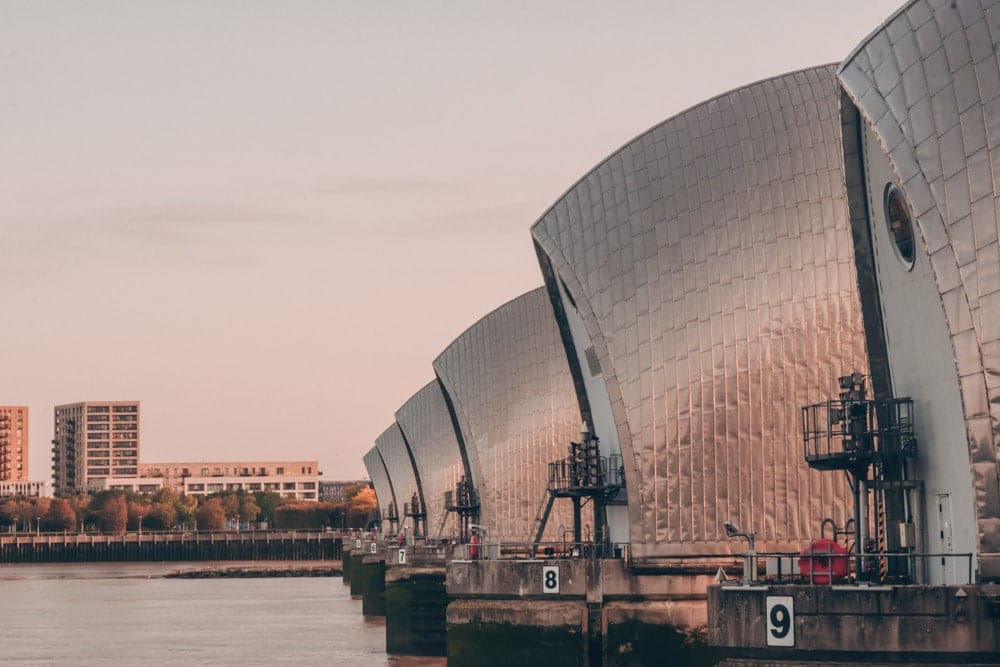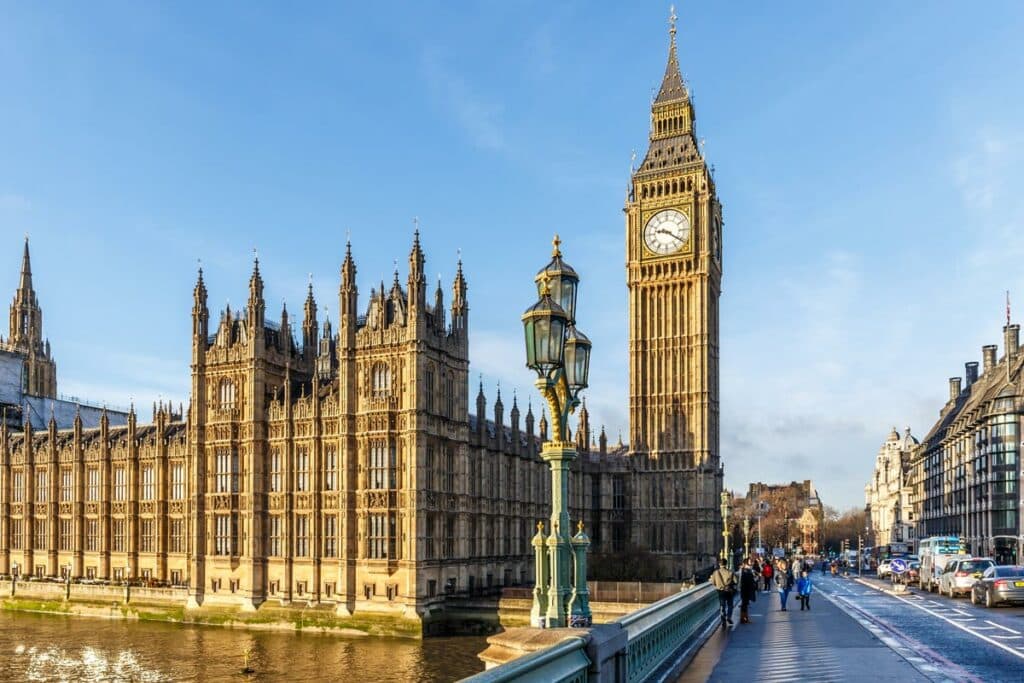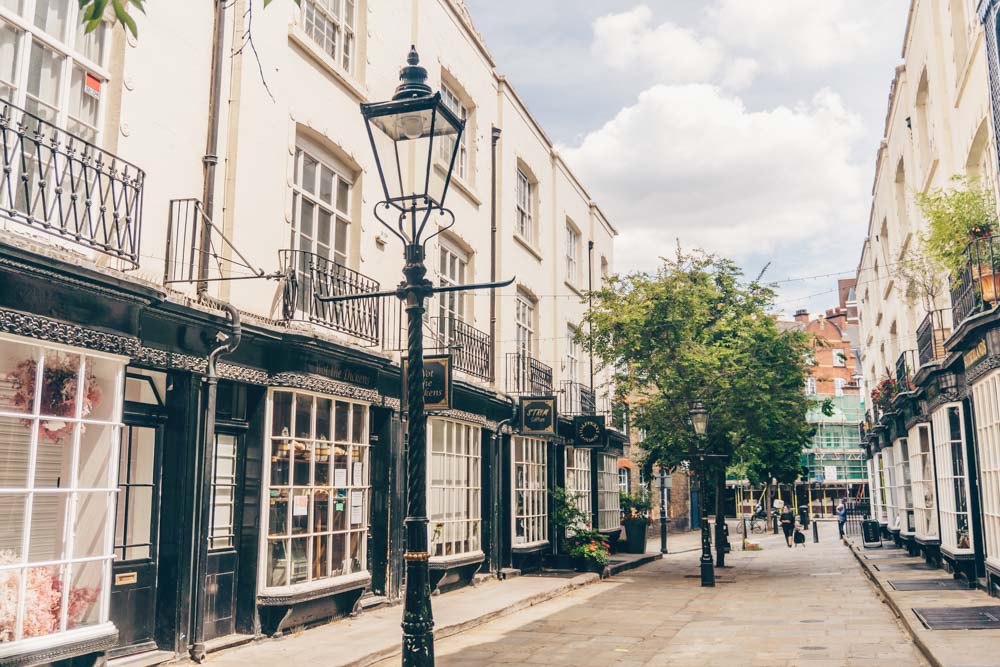You might have seen pictures of the Thames Barrier – London’s series of protective flood barriers that stretch across the Thames from Woolwich to Newham – but how much do you really know about them? Discover the story behind this iconic London dam.
London’s tale stretches back through time. Officially established during Roman times, and inhabited by native Britons long before that, the banks of the Thames on which London sits have always been a mixed blessing.
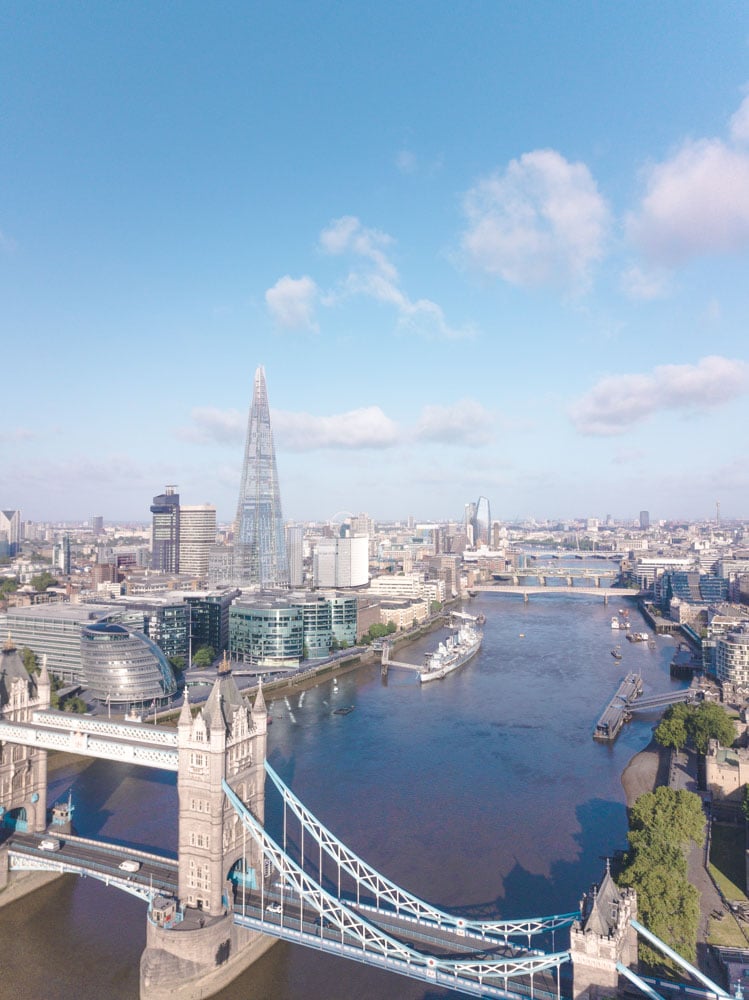
While it creates a fertile plain and provides easy access to the sea which the river feeds, the Thames has been prone to inconvenient and destructive flooding for millennia. As a tidal river, storms and tidal surges in the North Sea are the sources of potential calamity for the millions of Londoners living within a kilometre of the river.
The Thames has flooded frequently throughout the city’s history, causing death and damage when it did.
That was, until the late 20th century when Londoners finally said enough was enough, and came up with a solution that would hopefully solve the problem for good. That solution? The Thames Barrier.
Read on to discover the wonders and secrets of London’s flood barrier.
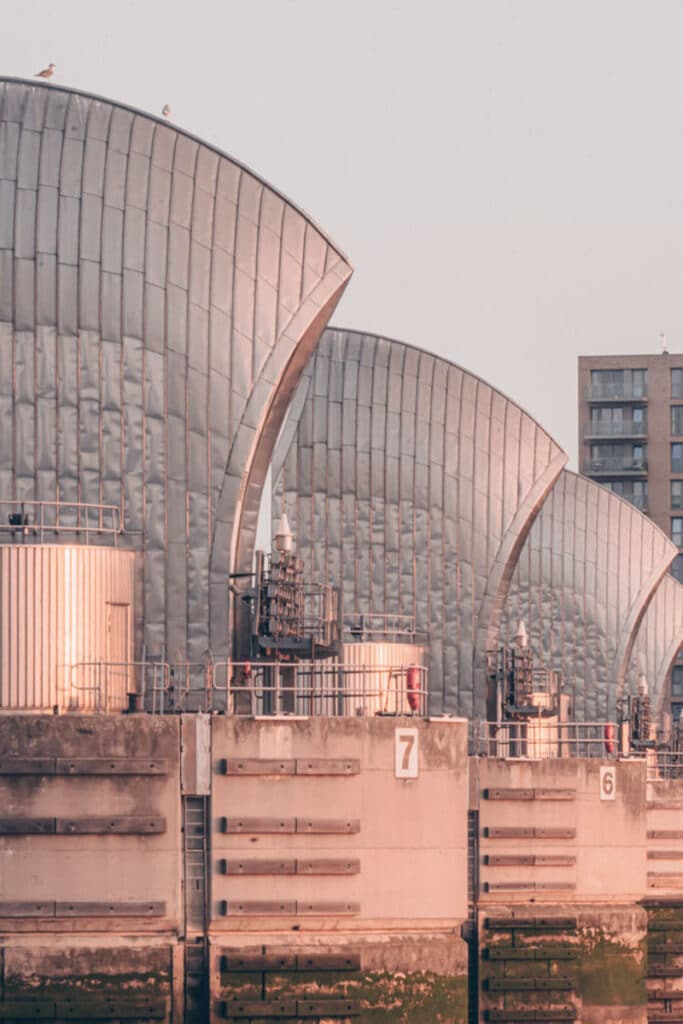
The History of the Thames Barrier
London and the Thames
Many major cities are built next to major rivers and London is no exception. Rivers provide fertile land and plentiful fishing opportunities. Perhaps most importantly, rivers are essential for travel, whether that be the movement of trade and cargo or the launching of military expeditions abroad.
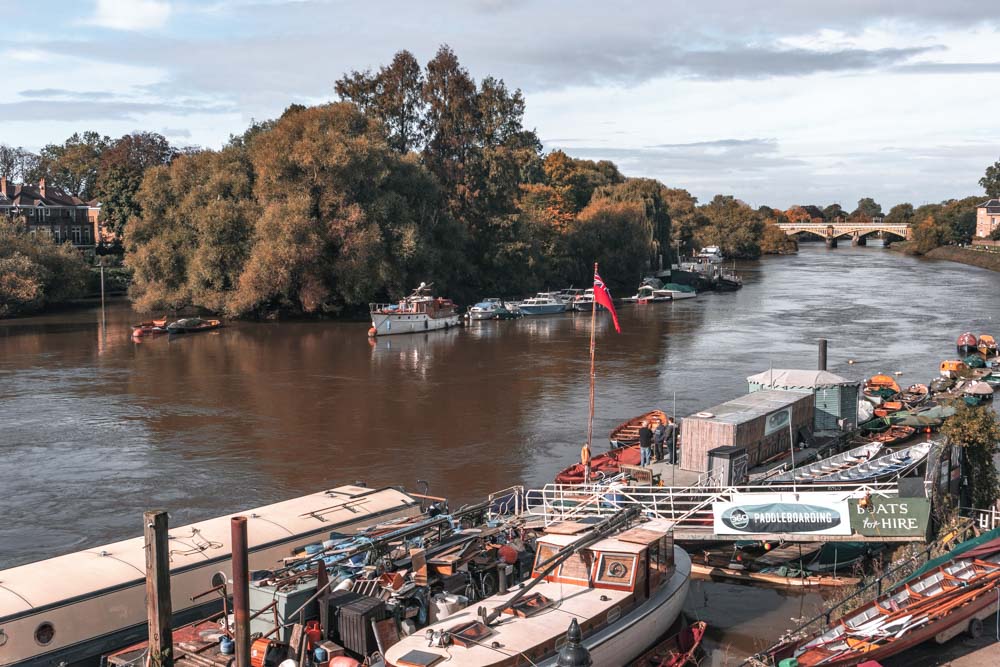
Thanks to its proximity to the sea, the River Thames is one of the deepest major rivers in Europe. This allowed larger ships to travel into the heart of London than were able to reach almost any other European capital.
However, it came at a major cost – the constant threat of the river overflowing and the frequent washing of the old wooden houses of London away.
As the city modernised, flooding in London remained a perennial problem. From the diary of Samuel Pepys, to the fiction of Charles Dickens, the constant fear of the Thames’ banks bursting was as much a part of London’s culture as double decker buses and red post boxes.
Much of the 20th century saw particularly brutal floods – in 1928, much of the East End was flooded and hundreds killed in the east of England.
Why? The Thames is a tidal river, prone to extraordinary surges in water level, especially during storms.
After further major flooding hit London in 1953, it was decided that a serious flood defence was needed to prevent such serious suffering hitting Britain’s capital ever again.
Plans for London’s Flood Barrier
Over the course of a decade, various plans were considered and responsibility for the project was prone to shift from one government body to another.
Eventually, the independent evaluator Sir Hermann Bondi made the final judgment that the costs of a barrier were likely to be far less than the costs of continued flooding.
Planners assessed that the potential damage from a storm amounted to over £2 billion in 1966 (equivalent to £50 billion in 2021!). Again taking inflation into account, the eventual cost of the Thames Barrier only ended up being £1.6 billion in today’s money.
Designing the Thames Barrier
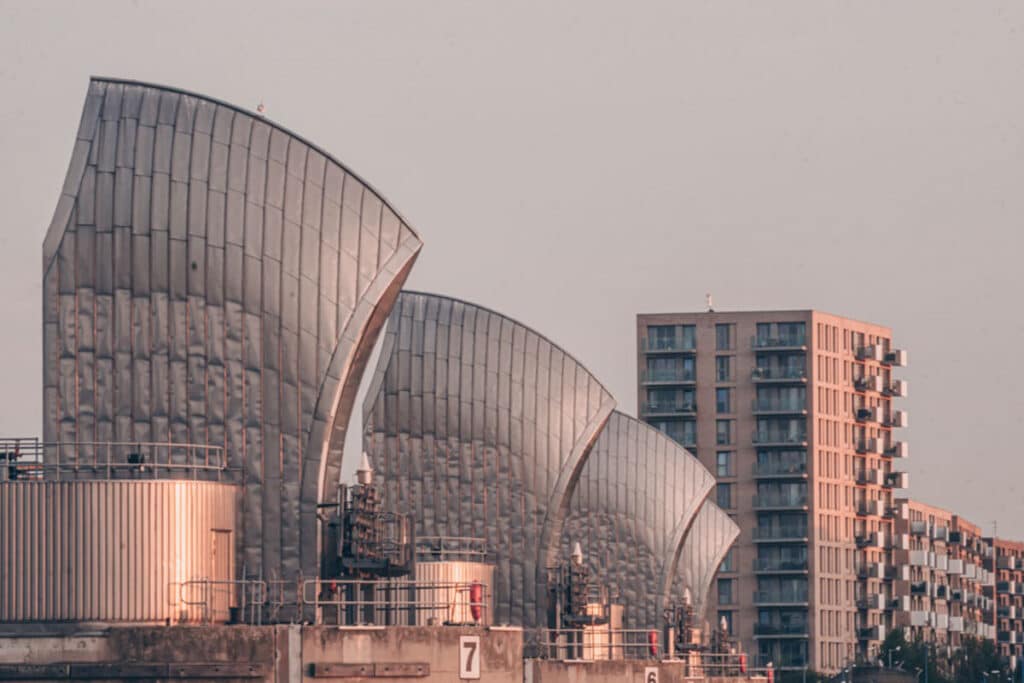
We have Charles Draper to thank for the design that was eventually implemented.
Inspired by his parent’s home – their gas cooker in fact – he designed the rising sector gates which would come to protect the city from flooding. After testing the barriers at the Hydraulics Research Station, construction commenced in 1974.
Incredibly, the barriers were constructed far away from London – over 200 miles away, in Darlington and at Port Clarence on the River Tees. They were then transported the length of England, and officially opened a decade after construction began – on the 8th May 1984.
The Life of the Barrier
The Barrier has had several close calls in its time. The most spectacular of these came in 1997. The dredging ship MV Sand Kite collided with one of the Barrier’s piers when sailing in thick fog. The ship began to sink, and as she did so she released 3,300 tonnes of matter from the ocean floor. That weighs as much as 825 elephants!
All the muck, dust and gravel meant that the gate could not be closed for several days, and the protective paint coating on the rim of the Barrier had been scraped off.
It is, however, quite reassuring to note that when a ship crashes into the Barrier, it is the Barrier which comes off the better!
How Does the Thames Barrier Work?
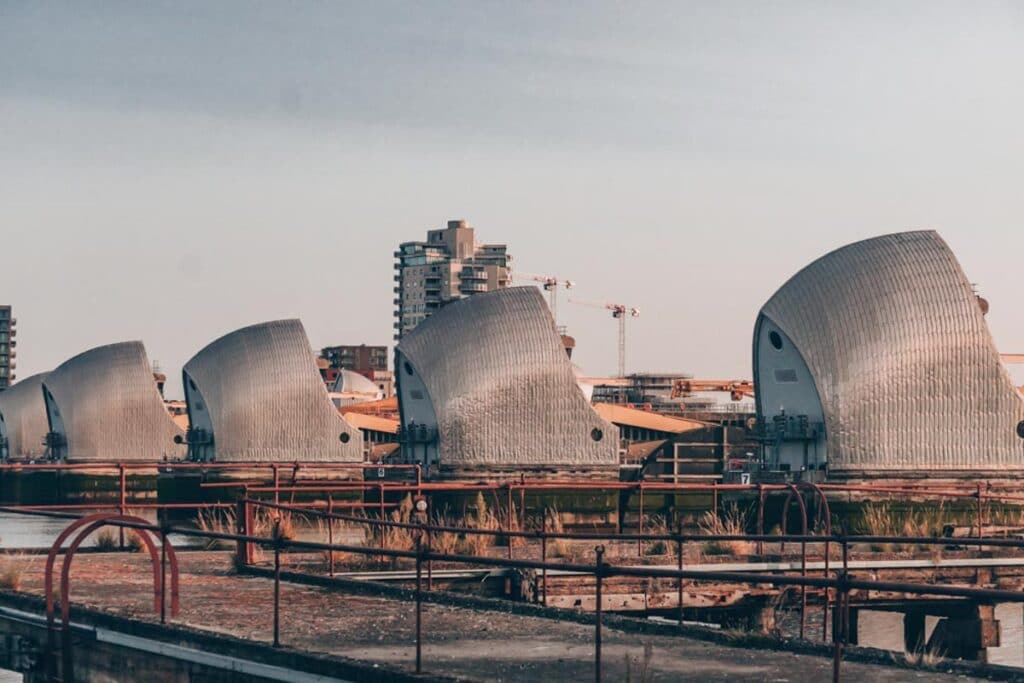
The Thames Barrier sits over a stretch of river 520m wide, between Woolwich south of the river and Newham to the north.
This location was chosen primarily because the banks are parallel to one another, and the chalk river bed is secure enough to support the weight of the barrier.
The gates divide the river into four sections, and are themselves circular, rotating into a raised position, whilst the gates are hollow inside. This allows the gates to be more dynamic in collecting and dispersing water. Each gate is 20.1m high and weighs 3,700 tonnes.
Opening and Closing the Barriers
The barrier is open most of the time. It’s closed when high tides are forecast in the North Sea and the river flows are high at the tidal limit at Teddington weir – 21 miles or so down the river in West London.
9 hours or so before a dangerous high tide is forecast, closure begins. River traffic is halted, subsidiary gates along the Thames Tideway are closed and other river users are alerted. Once river navigation has stopped, then the main barrier itself can be closed.
The barriers are also able to hold water as a reservoir to deal with the effects of heavy rain (and therefore potential flooding) in the west of London. Around a third of closures are primarily to deal with ‘river flooding’ coming from the west, rather than ‘tidal flooding’ coming from the east.
The barrier can be entirely open, when water runs freely down the river as though the barrier wasn’t in place at all. It can be entirely closed, holding water from flowing downstream entirely. It also has a third setting – the ‘underspill position’ – which allows some but not all water to pass through its gates.
Facts About the Thames Barrier
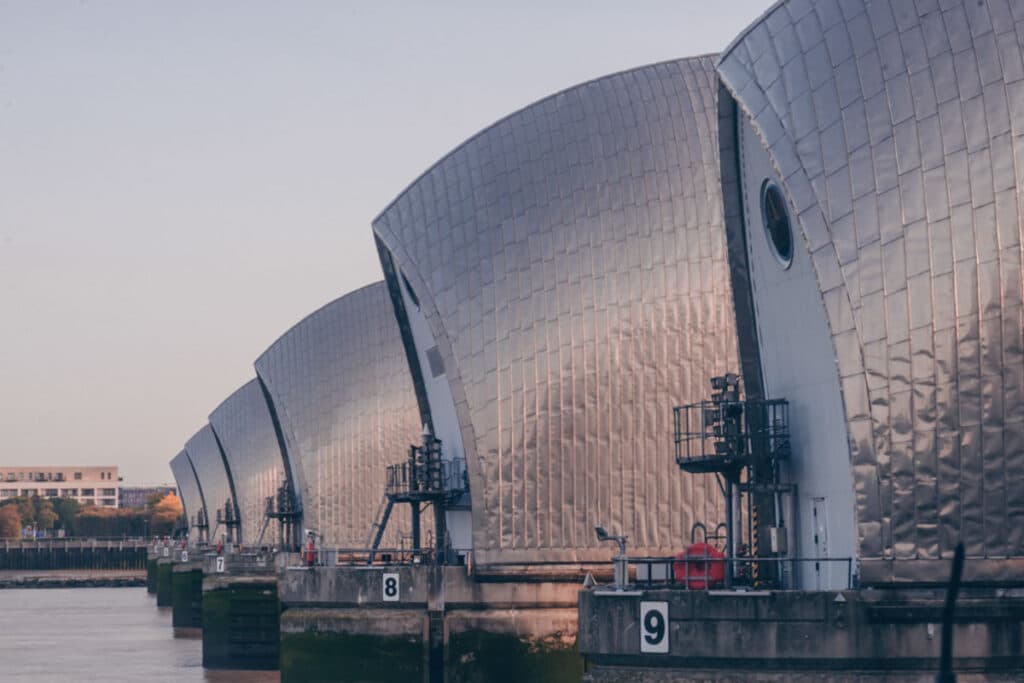
It’s the World’s Second Largest Flood Defence Barrier
Such an extraordinary structure carries with it some quite remarkable facts and figures. To start, it is the second largest flood defence barrier in the world, dwarfed only by the Oosterscheldekering Barrier in the Netherlands.
The Number of Closures are Increasing
Thames Barrier closures have been increasing. The Barrier was designed and built at a time before the effects of climate change on future sea level rise were popularly accepted.
Where the 1980s saw only 4 closures in 6 years, the 2010s saw an average of between 6 and 7 each year.
It is worth noting, however, that this data is somewhat skewed by an extraordinarily wet 2013 in which the Barrier was closed more than 50 times! Without the Barrier, the consequences of this extreme weather would be far more severe.
Without the Barrier, Parts of London Would be in Real Trouble
Many predictive models have been made to track the potential consequences of climate change on London, but there is no doubt that many iconic areas – Whitechapel and many parts of the financial district, for instance – would be victims of regular flooding or entirely swallowed by the river without the Barrier to defend them.
It’s Not Going to Protect London Forever
Even in spite of the higher than predicted level of sea rise, the Barrier could last until around 2060-70. However, the Barrier will become somewhat less effective with time.
That means that even though London has been safe from floods for the past forty years, we may need to seek alternatives if we want to keep the city safe.
At the moment, however, the Barrier is thought to be a successful defence against all but the most severe, once in a thousand year mega tides.
We’re Already Looking at Alternative Flood Barriers to Protect London
Academics are already looking into such alternatives.
One proposal involves building a far more ambitious project upstream, between Sheerness in Kent and Southend in Essex. This barrier would be a whopping 10 miles long. That’s almost twenty times the size of the Thames Barrier!
This would be the largest flooding defence ever created, as well as the largest single cross river man made structure ever made.
And Some of Them Are Quite Drastic
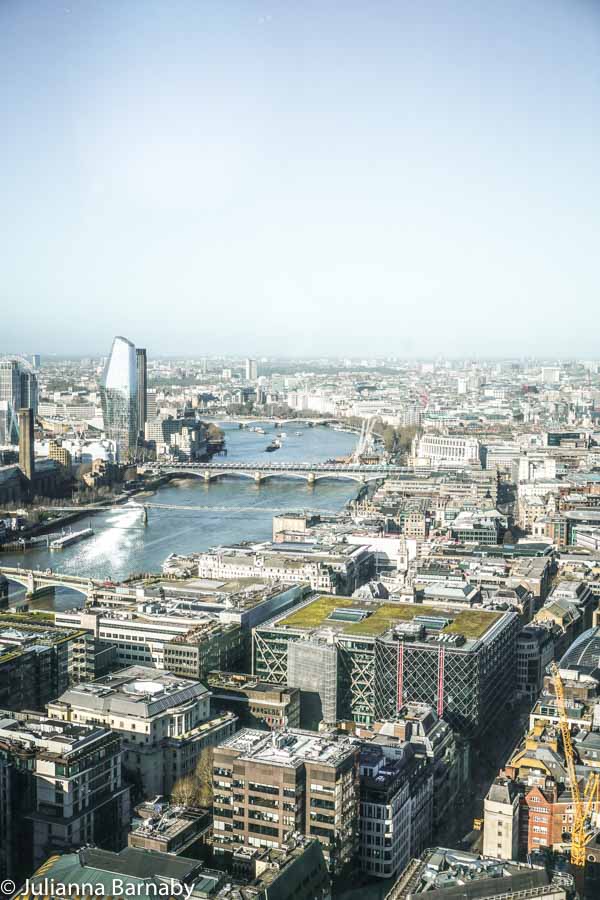
Almost as extraordinary as this barrier are some of the other alternatives.
One suggestion is to replace the barrier with flood walls along the river, but this has a few problems – one being that these walls would have to be “as high as the Victorian streetlamps” (according to a report made by the Greater London Authority in 2002).
That’s almost three metres of wall running along the entire river!
It’s hard to imagine London without the incredible visuals of the iconic Thames, but that is exactly what a world without the Thames Barrier would be like.
Sometimes Ships Try to Sneak Through the Thames Barrier
Whilst major cargo ships no longer travel up the Thames, instead docking at ports on the south coast like Dover or those on the east like Felixstowe, the Thames is still an incredibly busy waterway.
Over 5,000 ships pass through the barrier every year, and the co-ordination of these vessels with the main barrier, secondary barriers downstream and a huge range of tidal information is a serious job indeed.
Around four ships per year attempt to pass through the Barrier without seeking proper accreditation – which must cause a serious headache for the staff manning the controls!
It Has Saved Over a Million People From Being Affected by Flooding
An estimated 1.25 million people are saved from being directly affected by flooding thanks to the Barrier, not to mention the millions more who commute into or otherwise use the space that would be flooded. Approximately 48 square miles of London are being protected by the Barrier.
There are Tunnels Running Underneath the Thames Barrier
Beneath the Thames Barrier, there is a warren of tunnels which are for maintenance purposes. It’s said that you can hear ships passing overhead.
The Thames Barrier has Outlasted Most of the Organisations Originally in Charge of it
The Barrier has outlasted several of the organisations meant to be in charge of it. It was originally operated by the Greater London Council, but that was dissolved and so control of the Barrier passed into the hands of the Thames Water Authority.
It has since been in the hands of the National Rivers Authority, and is now controlled by the Environmental Agency. Quite the game of pass the parcel!
It’s Become a London Icon
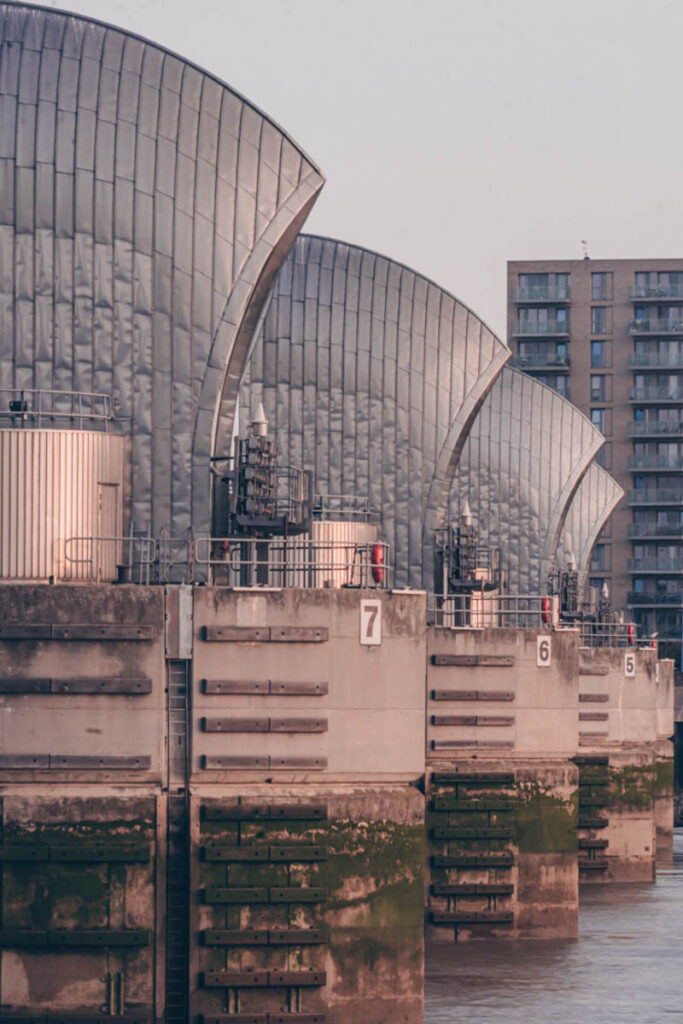
The Barrier has become a prominent structure in British popular culture, along such icons as Big Ben, the London Eye and the Millennium Dome.
From its appearances in sci-fi TV show Doctor Who, to an appearance in the globally popular British car show Top Gear, to a music video for British boy band Take That, the Barrier is now a well-loved piece of London history as well as the city’s protector.
There are Proposals to Build a Bridge Next to the Barrier
Recently, there have been proposals made for a pedestrian and cycling bridge next to the barrier, as one of the only places in East London where such a bridge would be possible. This is touted as greatly improving transportation options for those who reside in east London.
Practical Information and Map for Visiting the Thames Barrier
The Thames Barrier structure itself can’t be entered. However, the Thames Barrier has a nearby information visitor centre, which features riverside walkways, informative videos and a café.
You can also see the barrier from a Thames boat tour or speedboat ride, or from the nearby Thames Barrier Park which features fountains, a sunken garden, a playground and picnic areas.
Address
1 Unity Way, London SE18 5NJ, UK
Thames Barrier Visitor Centre Opening Times
In April, May, June, July, August and September,
Opens at 10.30 am and closes at 4.00 pm everyday (the latest time you can arrive to look around is 3.45 pm)
In October, November, December, January, February and March,
Opens at 10.30 am and closes at 3.30 pm everyday (the latest time you can arrive to look around is 3.15 pm)
Map
Looking for More Unusual London Guides?
Check these out…
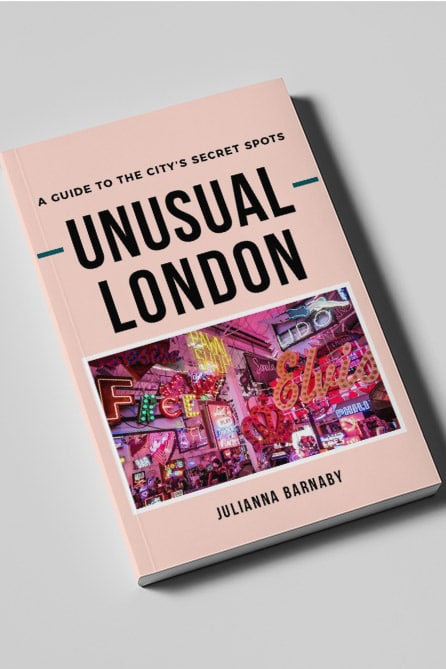
Unusual London Book

Discover the Secrets of Nunhead Cemetery
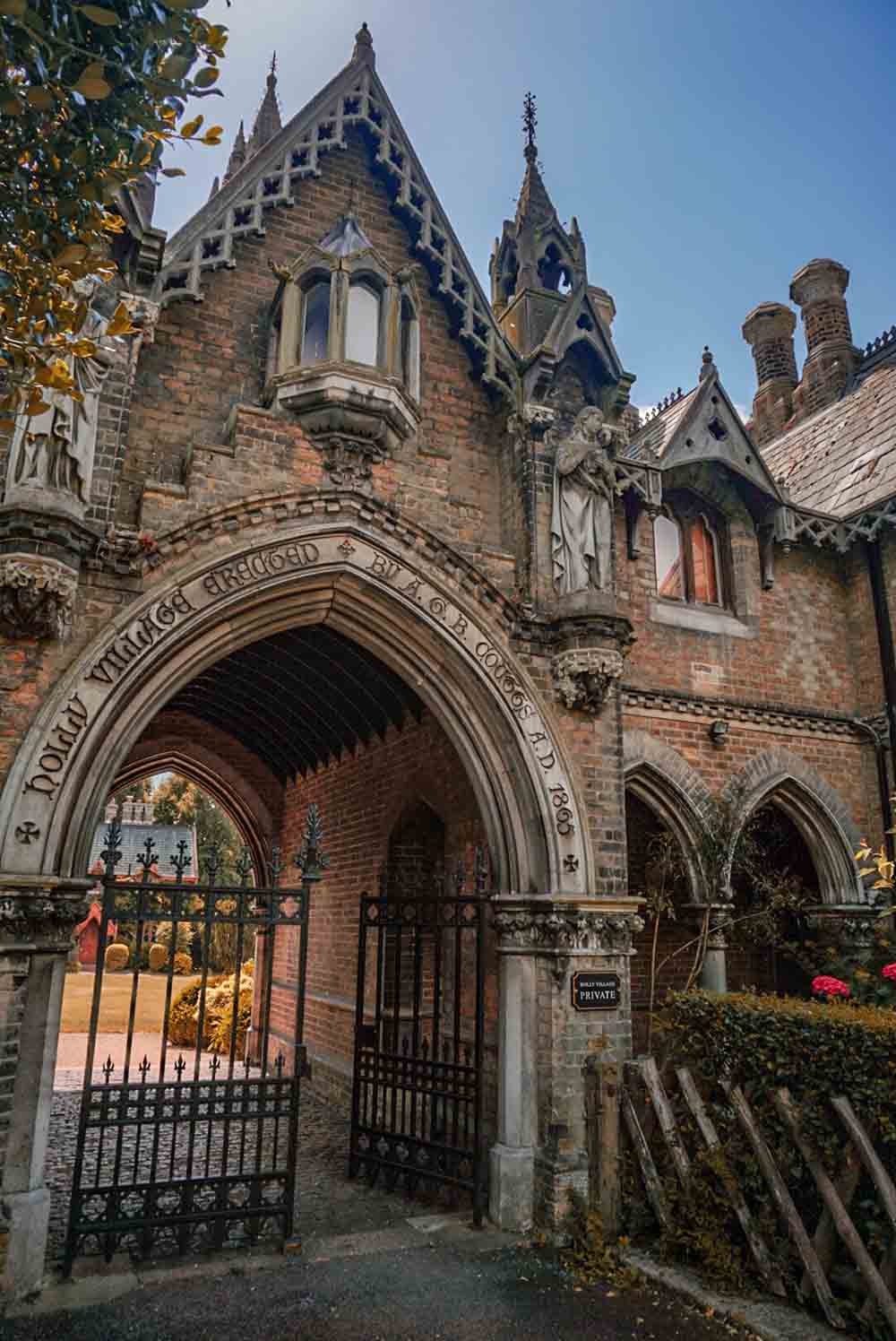
Holly Village – Hampstead’s Neo Gothic Dream

